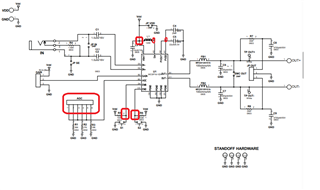Tool/software:
Hi Team,
Currently, we are designing a PCB with TPA2015D1 on it
As our factory still uses old equipments, we cannot check if there are any balls shorted or not visually.
So we wanted to know what happens when there are shorted BGA balls.
Specifically, what happens if;
1.PVOUT(A2) and SW(A3) are shorted.
2.AGC(B3) and VBAT(B4) are shorted.
3.SW(A3) and AGC(B3) are shorted.
4.AGC(B3) and END(C3) are shorted.
Additionally, it's really helpful if anyone tells us what could happen when ENB or END is open.
P.S. The PCB we are designing is too dense to place test pads on it, so in-circuit test, too, is impossible.
Which leaves us with only the function test to see if soldering went well or not.
Thank you in advance,
Hikaru



